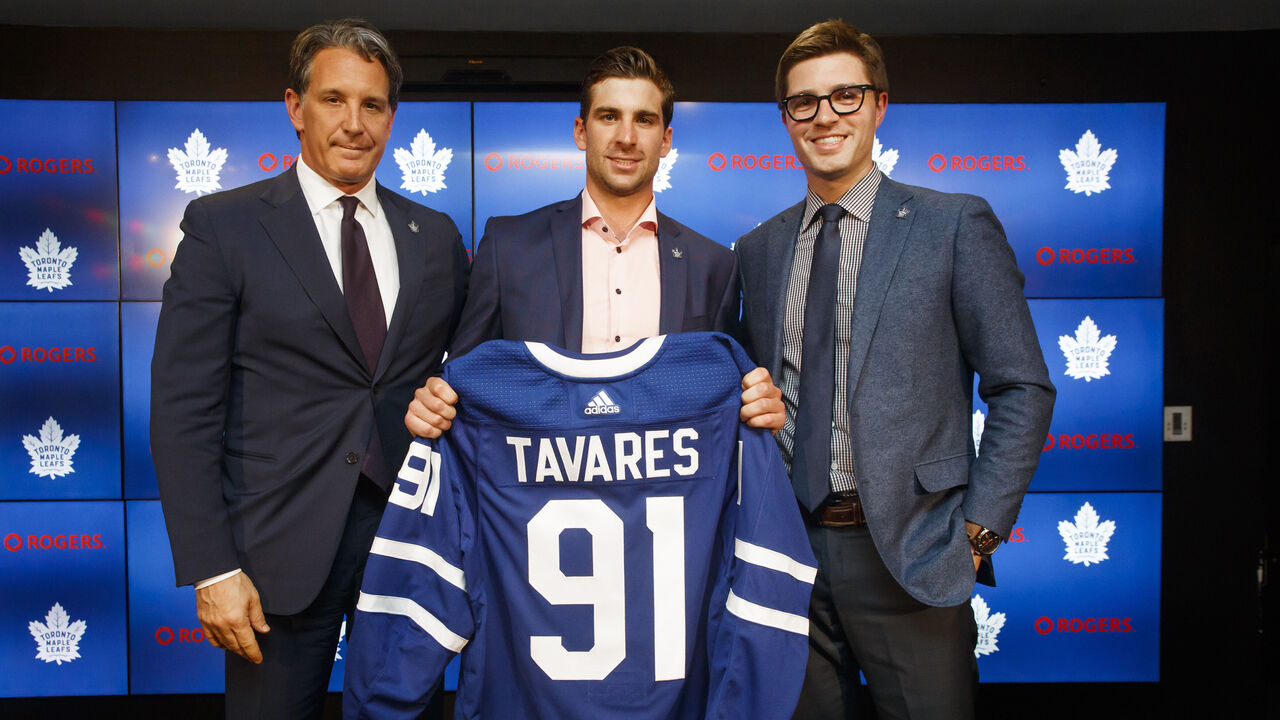At some point, Brendan Shanahan should have trusted his eyes over his gut
There's been a lot of talk this week about the Toronto Maple Leafs and pressure.
A couple of Florida Panthers suggested it was damn near impossible for Leafs players to deal with the circus that comes with playing in Toronto and its pent-up demand for Stanley Cup Playoffs success.
Opinions can vary on this, but the suggestion the burden of being a Leaf is too much to bear is rather obviously countered by the fact Toronto's oft-maligned star forwards all chose to sign contracts with the team, some of them several times.
Wherever one comes down on the question of whether Auston Matthews and friends are gripping their sticks too tight every spring, it seems clear that one particular Maple Leaf didn't have pressure weigh too heavily on him: Brendan Shanahan.
The team president for 11 seasons, Shanahan's time as the top hockey man in Toronto stands as a testament to the fact it's always good to have people below you on the organizational chart. And, therefore, someone to move out when results aren't as desired.
And move out people he did. Shanahan saw off four head coaches and three general managers. Now, he'll finally follow them out the door, with MLSE announcing Thursday it's time for a new voice in charge of the organization. (Shanahan was already granted permission to speak to the New York Islanders about a new job, so his official departure didn't come as a shock.)
But if replacing his coaches and GMs so often seems like the action of an impatient boss - a team president is often only allowed a couple of hiring do-overs before getting the boot himself - it's also true that patience was also Shanahan's greatest undoing. Or perhaps that trait should be more accurately called stubbornness.
Shanahan had already been in Toronto for four seasons, on his second coach (Mike Babcock) and second general manager (Lou Lamoriello), when he decided to replace the latter with Kyle Dubas, then one of Toronto's assistant GMs. The Shanahan-Dubas pairing promptly wooed hometown free-agent star John Tavares to sign with the Leafs, putting him among elite youngsters William Nylander, Mitch Marner, and Matthews in the forward lineup.

From the moment it happened, eyebrows were arched in curiosity: would it be possible in the salary-cap era to have four expensive forwards soaking up so much cap room? Wouldn't that make it tough to fill out the rest of the roster? But Shanahan and Dubas, as they often said, were betting on skill and talent.
Even when those bets kept busting, Shanahan kept pushing his chips back in. Over nine straight playoff appearances that resulted in exactly two series wins, there were two moments that cried out for a shift in direction. In 2021, when the pandemic forced divisional realignment, Toronto blew a 3-1 series lead to Montreal, a team that won fewer than half its games during the regular season. There were ready-made excuses - an injury to Tavares, the general impact of the pandemic on everything - but that was already five consecutive first-round playoff ousters for a team that was by that point supposed to be a Cup contender.
It's true that playoff hockey is fickle and that a couple of bounces might have changed the narrative around the Leafs, but it was also true that something about Toronto's young core simply wasn't clicking when the stakes were highest.
But Shanahan sat on his hands. Two years later, when Toronto finally did manage to win a playoff series only to immediately flop against the eight-seed Panthers, he had another opportunity to call an end to the Core Four era, this time after Dubas departed and was replaced as GM by Brad Treliving.
Shanahan sat tight, again. The story was that Treliving didn't want to be rushed into making decisions about Toronto's stars when he'd just taken the job - did he not have a TV? - and so Marner and Tavares entered the final two years of their contracts, with Marner's no-movement clause activating July 1, 2023. The Core Four was effectively locked in for two more years.
Two more years that to the surprise of no one included two more Game 7 losses, plus one more coach firing to add to the Shanahan ledger.
What might be the strangest part of Shanahan's reluctance to move away from a roster strategy that kept providing painfully similar results is that there's not a lot of evidence he had his head buried in other tasks related to the team presidency. There were no practice facilities to be built, no stadium renovations to oversee, no massive overhaul of the Maple Leafs' organizational structure - though he did hire a lot of assistant coaches and front-office personnel. He was, in other words, as well positioned as anyone to see that the team led by those four top forwards kept shrinking at the worst possible times.
But Shanahan kept the faith. It's like he kept trusting his gut over his own lying eyes.
His patience, or stubbornness, was in the end not rewarded. Many Leafs fans will feel that's a shame. Many others will think he deserved exactly what he got.
Scott Stinson is a contributing writer for theScore.